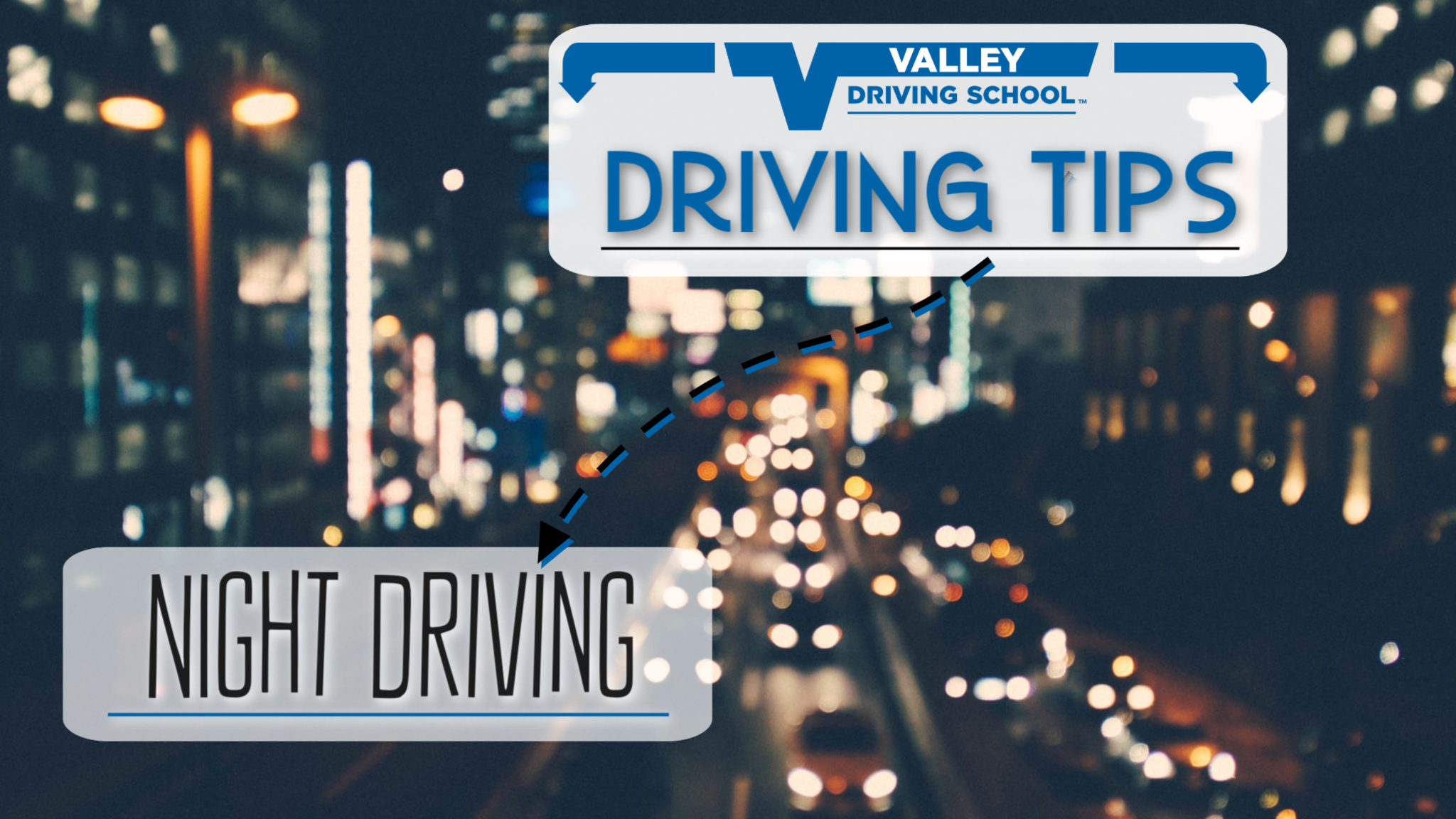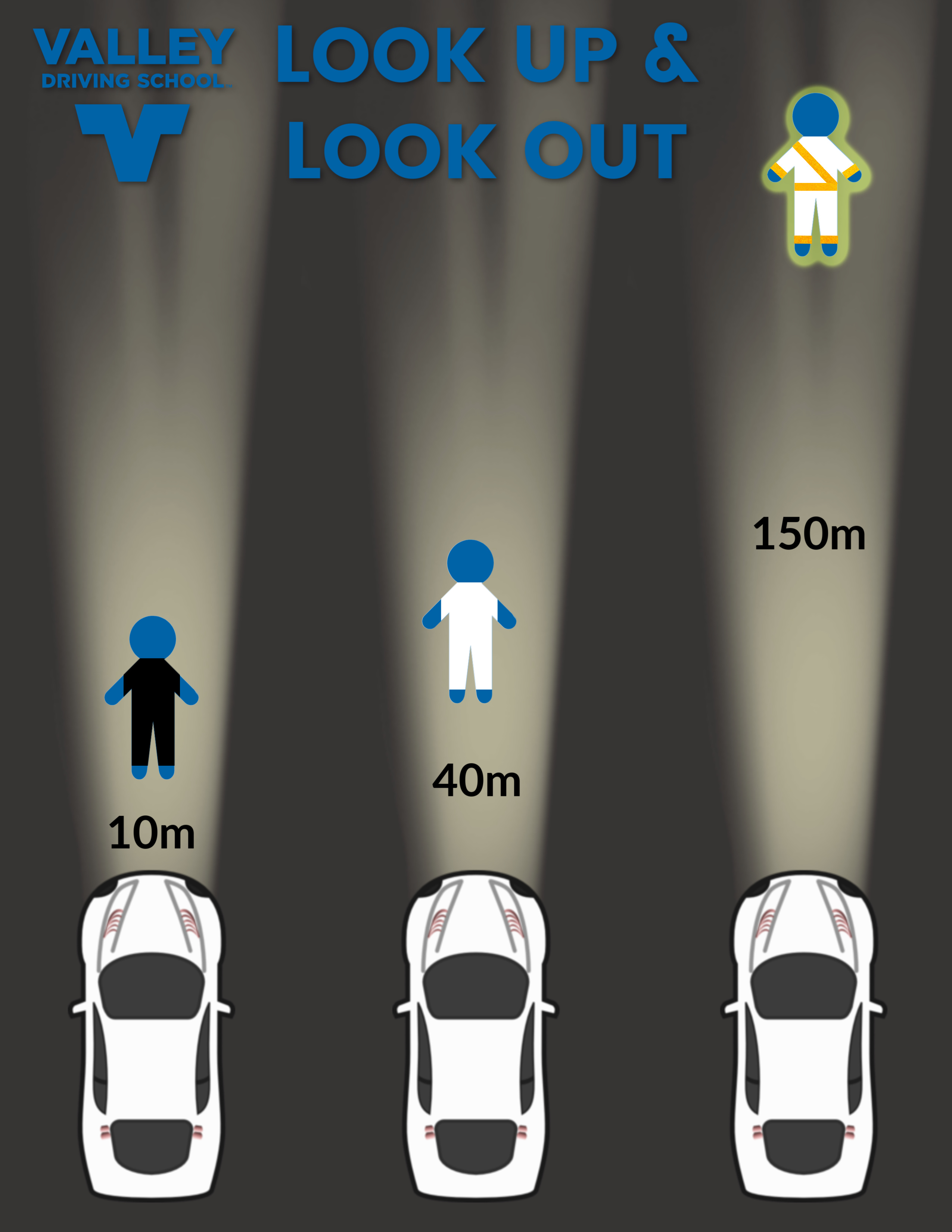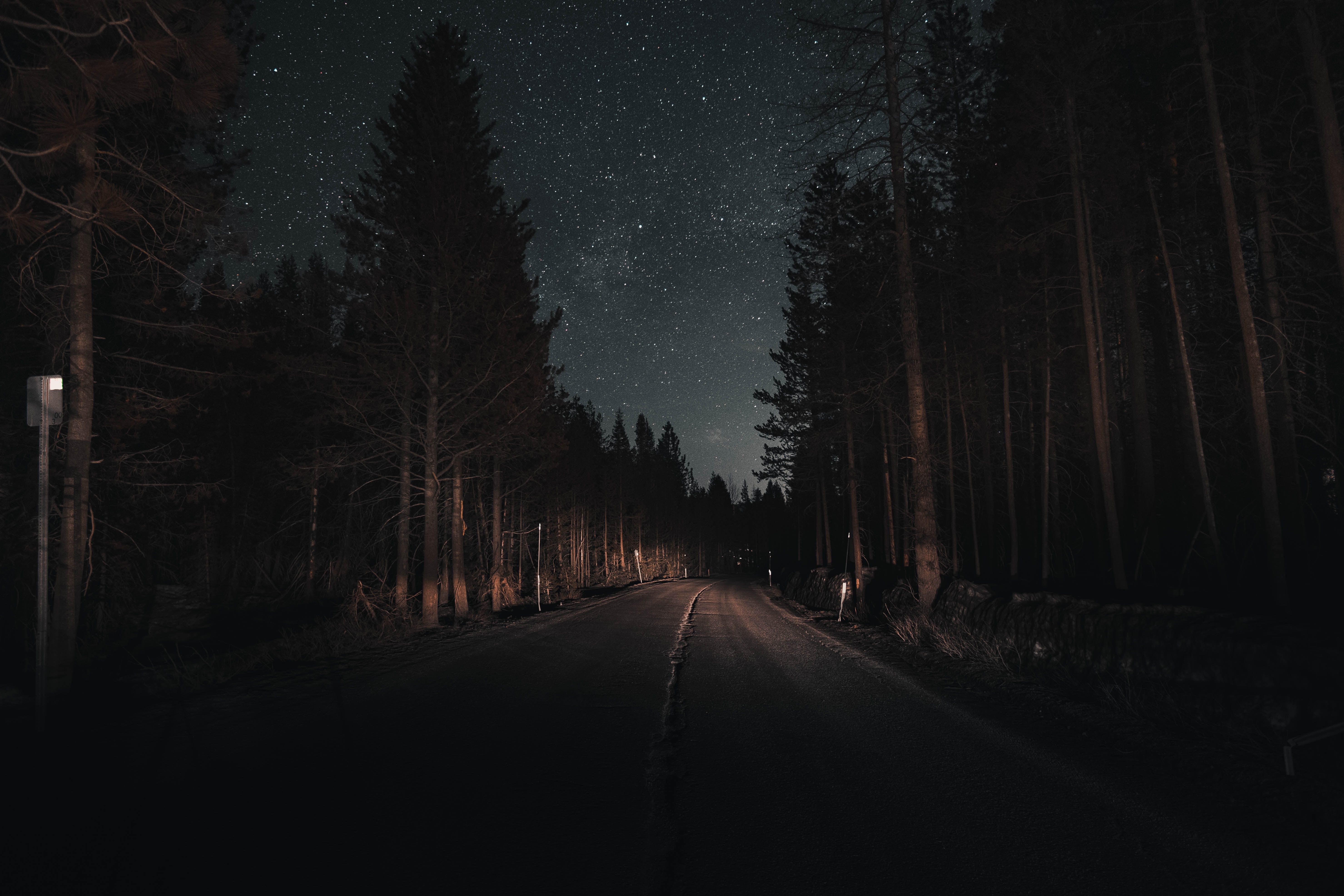No matter how sharp your vision is, driving at night can pose challenges for new and experienced drivers alike. It can be more difficult to see hazards, the curves of the road, wildlife, and even other drivers. Conversely, it’s just as difficult for other drivers to see you. Depth perception is also reduced in low light or completely dark conditions.

In this week’s post, we’re discussing some tips to help when you’re driving at night or in dark conditions.
Headlights
When driving in low light, use your headlights. You are required to use them 30 minutes after sunset until 30 minutes before sunrise. Don’t be confused by your car’s daytime running lights - nighttime headlights are a separate setting on your vehicle’s instrument cluster. Low beam headlights, or the default setting when you turn on your nighttime headlights, typically light a path 30 metres ahead of your vehicle. You can engage your high beam headlights when necessary to light a path up to 100 metres in front of you.

When approaching another vehicle that is traveling the same direction as you or when you meet a vehicle approaching from the opposite direction, you must dim your high beam headlights at least 150 metres from the other vehicle. Common courtesy is to dim your high beams as soon as you see the other vehicle - this helps other drivers maintain their own visibility and allows everyone to remain safe.
If you approach a driver from the opposite direction that has not dimmed their headlights, refrain from turning on your high beams in response - two drivers with reduced visibility due to high glare can create a dangerous situation. Instead keep your gaze focused on the right side of your lane and follow the white line, which is also known as the “fog line”. This will help you keep your vehicle away from oncoming traffic.
Sharing the Road
When driving during the day or at night, animals on the road can be a hazard, but they become much more difficult to spot when driving outside of the city and in dark areas without street lamps. To best protect yourself from a collision with wildlife, follow these tips:
- Scan the left and right sides of the road, as well as the path in front of you.
- Take note of animal warning signs and wildlife warning reflectors on the shoulder. Reduce your speed if necessary.
- Sudden flashes of light amongst the darkness can be your headlights reflecting off of an animal’s eye.
- If you see one animal, it’s very likely there are more nearby.
- Animals can be most difficult to spot at dusk and dawn, and may be most likely to be on the move during these hours.

You must also be alert and watching for pedestrians and cyclists at night. If pedestrians are not wearing reflective clothing, they may be even more difficult to spot. Pedestrians wearing dark clothing can make them nearly impossible to spot, especially on unlit roads like highways or side streets. Without reflective or light coloured clothing, a pedestrians’ visibility decreases significantly so keep vigilant in your scans of the road and accompanying shoulders. Slow down if you spot anything that appears to be moving near the shoulder. If a vehicle has pulled over on the side of the road, proceed with caution; it’s likely the vehicle’s occupants may be walking or standing somewhere nearby. Crosswalks should also be approached with caution, whether they are pedestrian-controlled, uncontrolled, or at a traffic intersection as pedestrians could appear and start to cross with or without warning.
As more and more roads become equipped with bike lanes, these can aid driver’s visibility of cyclists during the night but can also contribute to reduced visibility when drivers are not expecting cyclists in their own lanes. If there are bike lanes nearby, watch for cyclists both in and out of the lanes and be extra cautious when moving through intersections and near side streets. Cyclists don’t always stay to the right. When a cyclist needs to make a left turn, they will move over to the left lane, from the right or another lane. The cyclist may also move within their lane if they encounter a hazard in the road, such as a pothole. Cyclists can easily be moving faster than you think, so you may not expect them to move from one space to another as quickly as they can.
Low-visibility Conditions
Although it’s required to have your headlights on during the hours we mentioned above, there are other daytime driving conditions in which nighttime headlights are a beneficial safety tool. If you are driving in fog or heavy rain, turn on your nighttime headlights - this will automatically illuminate your taillights for drivers approaching behind you, and will give you better visibility. Always be sure to keep both the inside and outside of your windshield clean; this will help eliminate glare and give you the best possible visibility in poor or night driving conditions.
Keeping your headlights clean will maximize the illuminated driving path in front of you. If your headlights become dirty or dim while driving due to dirt and mud, stop as soon as you are able to do so safely and clean them. If necessary, don’t resume your trip until visibility and driving conditions improve.
Motorcyclists
If you are a motorcycle rider, practicing safe riding at night is imperative. Along with wildlife, other drivers, and pedestrians, hazards on the road like potholes, gravel, or changes in pavement can cause serious issues for motorcyclists. Maintaining a safe speed, keeping your headlight clean and constantly scanning the road will help avoid hazards. Be sure to use a clear or nighttime-specific visor on your helmet; the typical tint on your daytime visor will greatly reduce your visibility at night.
You should also work to make yourself more visible to other road users – you can invest in reflective gear that combines the safety technology you need while increasing your visibility. Make sure that all of your bike lights are in working condition and that you have a spare bulb or two, in case one is suddenly burnt out and you need to make a quick fix.
Commercial Drivers
If you are a commercial or truck driver on a long trip, staying vigilant and alert during the night is incredibly important. Always start out with plenty of rest and plan out your future rest stops ahead of time, ensuring that you will have a rest before you get too tired. Driving with a partner is also a great way to keep alert, giving you an extra set of eyes and ears, and someone to help keep you focused and awake. If you do begin to feel tired, pull over and stop for a rest as soon as it’s safe to do so. It may be sooner than what you planned for, or at a different rest stop than you intended, but being well-rested will ensure a safe trip!

---
Driving at night comes with its risks, but if you head out with safety at the top of your mind, you’ll greatly reduce on-road incidents. Replace your headlights regularly, keep your vehicle, windshield and lights clean, slow down when necessary, and stay vigilant in your scanning of the road and trust your instincts - if you feel like the driving conditions are unsafe, pull over and wait or stop for the night before continuing your journey.
